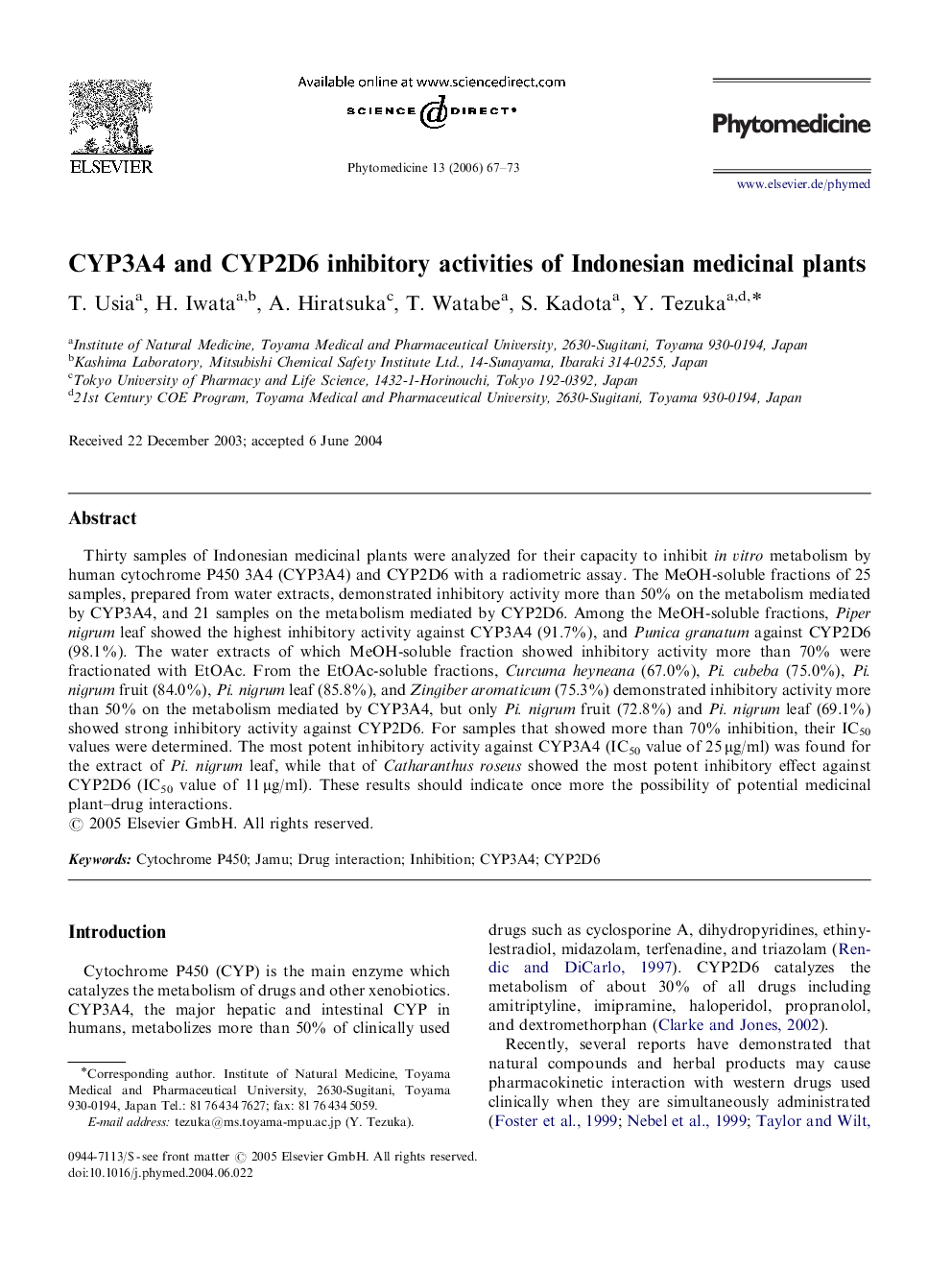| Article ID | Journal | Published Year | Pages | File Type |
|---|---|---|---|---|
| 2497680 | Phytomedicine | 2006 | 7 Pages |
Thirty samples of Indonesian medicinal plants were analyzed for their capacity to inhibit in vitro metabolism by human cytochrome P450 3A4 (CYP3A4) and CYP2D6 with a radiometric assay. The MeOH-soluble fractions of 25 samples, prepared from water extracts, demonstrated inhibitory activity more than 50% on the metabolism mediated by CYP3A4, and 21 samples on the metabolism mediated by CYP2D6. Among the MeOH-soluble fractions, Piper nigrum leaf showed the highest inhibitory activity against CYP3A4 (91.7%), and Punica granatum against CYP2D6 (98.1%). The water extracts of which MeOH-soluble fraction showed inhibitory activity more than 70% were fractionated with EtOAc. From the EtOAc-soluble fractions, Curcuma heyneana (67.0%), Pi. cubeba (75.0%), Pi. nigrum fruit (84.0%), Pi. nigrum leaf (85.8%), and Zingiber aromaticum (75.3%) demonstrated inhibitory activity more than 50% on the metabolism mediated by CYP3A4, but only Pi. nigrum fruit (72.8%) and Pi. nigrum leaf (69.1%) showed strong inhibitory activity against CYP2D6. For samples that showed more than 70% inhibition, their IC50 values were determined. The most potent inhibitory activity against CYP3A4 (IC50 value of 25 μg/ml) was found for the extract of Pi. nigrum leaf, while that of Catharanthus roseus showed the most potent inhibitory effect against CYP2D6 (IC50 value of 11 μg/ml). These results should indicate once more the possibility of potential medicinal plant–drug interactions.
